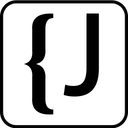
在go语言中构建web服务时,处理客户端通过http post方法发送的json数据是一项常见任务。然而,许多初学者可能会在如何正确解析请求体方面遇到困惑,尤其是在面对与传统表单提交不同的json数据时。本文将深入探讨这一问题,并提供一个符合go语言最佳实践的解决方案。
在处理HTTP POST请求时,Go的net/http包提供了req.ParseForm()方法,用于解析URL编码的表单数据(application/x-www-form-urlencoded)或多部分表单数据(multipart/form-data)。当请求体是JSON格式(application/json)时,尝试使用req.ParseForm()会导致意外行为。
考虑以下一个常见的错误示例:
package main
import (
"encoding/json"
"log"
"net/http"
)
type test_struct struct {
Test string
}
func testHandlerMisconception(rw http.ResponseWriter, req *http.Request) {
req.ParseForm() // 错误:尝试解析JSON作为表单数据
log.Println(req.Form)
// LOG: map[{"test": "that"}:[]] - JSON字符串被当作一个表单键
var t test_struct
for key, _ := range req.Form {
log.Println(key)
// LOG: {"test": "that"}
err := json.Unmarshal([]byte(key), &t) // 尝试将表单键(整个JSON字符串)反序列化
if err != nil {
log.Printf("Error unmarshalling form key: %v", err)
}
}
log.Println("Parsed value (misconception):", t.Test)
// LOG: that (虽然最终得到了数据,但过程极其不优雅且脆弱)
}
func main() {
http.HandleFunc("/test_misconception", testHandlerMisconception)
log.Fatal(http.ListenAndServe(":8082", nil))
}在这个示例中,当客户端发送一个JSON POST请求(例如 curl -X POST -d "{\"test\": \"that\"}" http://localhost:8082/test_misconception)时,req.ParseForm()会将整个JSON字符串 {"test": "that"} 视为一个没有值的表单键。随后,开发者不得不遍历req.Form的键,并尝试将这个键(即完整的JSON字符串)反序列化到结构体中。这种方法不仅效率低下,而且容易出错,因为它依赖于一个不正确的假设,即JSON数据会被ParseForm处理成可用的键值对。
Go语言标准库提供了更优雅、更直接的方式来处理JSON POST请求。核心在于理解http.Request.Body是一个io.Reader接口。encoding/json包中的json.NewDecoder正是设计来从io.Reader中读取并解码JSON数据的。
立即学习“go语言免费学习笔记(深入)”;
推荐的做法是直接将req.Body传递给json.NewDecoder,然后调用其Decode方法将JSON数据解析到预定义的结构体中。

Easily find JSON paths within JSON objects using our intuitive Json Path Finder
 30
30

package main
import (
"encoding/json"
"fmt"
"log"
"net/http"
)
// test_struct 定义了预期的JSON数据结构
type test_struct struct {
Test string `json:"test"` // 使用json tag确保字段名匹配
}
// handleTest 处理 /test 路径的POST请求
func handleTest(rw http.ResponseWriter, req *http.Request) {
// 1. 验证请求方法
if req.Method != http.MethodPost {
http.Error(rw, "Method Not Allowed", http.StatusMethodNotAllowed)
return
}
// 2. 使用 json.NewDecoder 直接从请求体中解码
// req.Body 是一个 io.Reader,非常适合 NewDecoder
decoder := json.NewDecoder(req.Body)
var data test_struct
err := decoder.Decode(&data) // 将请求体中的JSON解码到data结构体
// 3. 错误处理
if err != nil {
// 处理解码错误,例如JSON格式不正确或IO错误
log.Printf("Error decoding JSON from request body: %v", err)
http.Error(rw, "Bad Request: Invalid JSON format or malformed request", http.StatusBadRequest)
return
}
// 4. 成功解析数据并进行业务逻辑处理
log.Printf("Successfully received data: %+v", data)
fmt.Fprintf(rw, "Successfully processed: %s", data.Test)
}
func main() {
http.HandleFunc("/test", handleTest)
log.Println("Server starting on :8082. Listening for POST requests on /test")
log.Fatal(http.ListenAndServe(":8082", nil))
}为了运行上述推荐实践的代码,你可以将其保存为 main.go,然后执行 go run main.go。
测试方法:
打开一个新的终端窗口,使用 curl 命令发送一个JSON POST请求:
curl -X POST -H "Content-Type: application/json" -d "{\"test\": \"that\"}" http://localhost:8082/test预期输出:
Server starting on :8082. Listening for POST requests on /test
Successfully received data: {Test:that}Successfully processed: that
正确处理Go语言中的JSON POST请求是构建健壮Web服务的基础。通过利用encoding/json包中的json.NewDecoder,并将其与http.Request.Body结合使用,我们可以以一种简洁、高效且符合Go语言习惯的方式解析JSON数据。避免使用req.ParseForm()来处理JSON请求体,这将使你的代码更加清晰、更易维护,并能更好地应对潜在的错误情况。
以上就是Go语言API开发:正确解析JSON POST请求体的详细内容,更多请关注php中文网其它相关文章!

每个人都需要一台速度更快、更稳定的 PC。随着时间的推移,垃圾文件、旧注册表数据和不必要的后台进程会占用资源并降低性能。幸运的是,许多工具可以让 Windows 保持平稳运行。




Copyright 2014-2025 https://www.php.cn/ All Rights Reserved | php.cn | 湘ICP备2023035733号